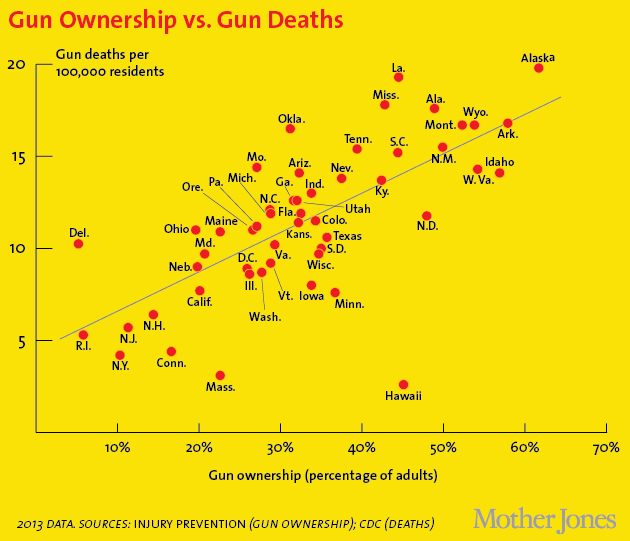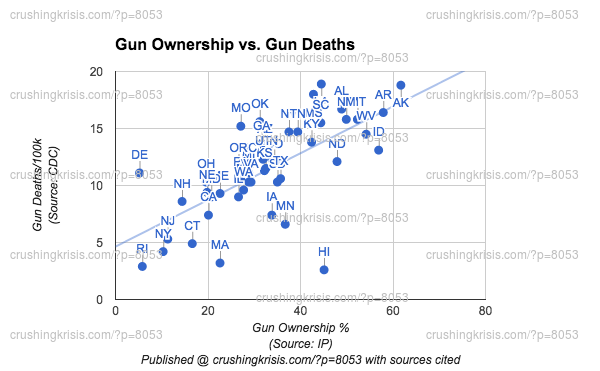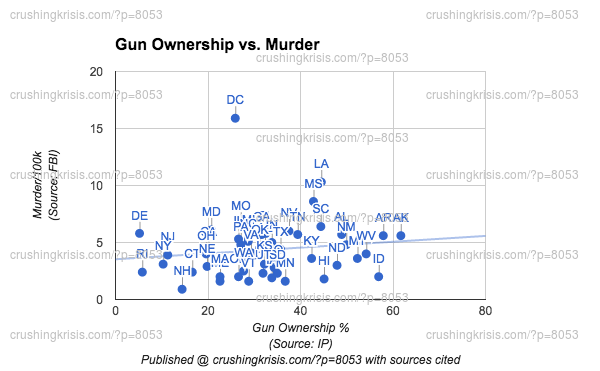I’ve never held a gun.
I used to want to shoot one. This was in the 90s, when The X-Files made it seem like a really good idea to be an FBI agent. That came with shooting guns, so I figured I had to get used to the idea. Since that never came to pass, neither did shooting a gun.
I’ve mentioned in passing that my father owns a gun store. He didn’t when I was a child, and despite it being about 15 years since I learned this fact I’ve seen him a finite amount of times in that period and fun gun facts have only come up in a few of them.
My father is a reasonable guy who is willing to have a conversation about just about anything. As someone in a super-liberal, gun-free bubble, his perspective can be enlightening. Our last chat was after the Sandy Hook shooting. Though he largely deals in antiques, he mentioned that gun sales and, especially, ammunition sales tend to spike after a shooting. He also talked about the realities of owning a gun shop, what background checks really meant for him, and how he sometimes decides not to sell a gun or ammo to a person.
Today I posted a now widely-shared Philly.com article titled “I bought an AR-15 semi-automatic rifle in Philly in 7 minutes” on Facebook – not to stir any debate, but because I found it to be compelling journalism. In reaction, a conversation with a college friend who is a farmer sprung up. It took him “about an hour” to buy a Ruger 10/22 in a different state. That gun is is semi-automatic – a feature he appreciates because he’s trying to keep foxes away from his quail and he’s not such a good shot at a distance.
(I love my friends.)
My point is that it’s easy to say “BAN ALL GUNS” when you’re someone who has never held one, needed one, or sold one. Screaming from within a bubble using data that agrees with you doesn’t change hearts and minds.
Screaming from within a different bubble where you say “GUNS ARE GREAT” without those same perspectives is just as ineffective.
Since there has been a lot of bubble-screaming this week, I decided the only real answer was data and I would only accept that data if it was from non-partisan or fact-checked sources had references to the primary sources of said data.
Because I’m still struggling over the definition of semi-automatic and I no longer have an amazing team of analysts to help me interpret statistics, I decided to go broader and simply try to understand our rate of gun deaths.
I began with this chart from a Mother Jones article, which I have seen circulated widely. Mother Jones is “a reader-supported nonprofit news organization” with (in my experience) a generally liberal slant. While this chart seems to scream “more armed people equals more dead people,” it was important to me to see their sources.

The X-axis is the percentage of adults in a state who own a gun. The Y-axis is gun deaths per 100,000 residents. All states are plotted. The data is from 2013. There is an obvious mathematical correlation between %age of ownership and # deaths with only a handful of truly surprising outliers (Delaware, Massachusetts, Hawaii).
The death data sourced directly from the Centers For Disease Control, which fits my definition of a trusted primary source. It’s not necessarily violent gun deaths, which I know seems like an oxymoron, but that means it includes suicides and accidents. I don’t feel either should be left out of this equation – those deaths are certainly an aspect of the gun control debate.
The ownership data is sourced from Injury Prevention, “an international peer-reviewed journal for health professionals and others in injury prevention.” I tracked down the full IP article as well as a Business Insider article using the data, and the data is based on a sample of 4,000 adults. Despite the smallish sample, the ownership stats were relatively consistent to less recent other sources I could find. (Using the number of registered firearms isn’t apples to apples, but could be a good supporting statistic, if you are so inclined.)
With the data confirmed, I could focus on the chart. It turns out, 1% of the population in your state owning a gun was good for about .14 to .59 dead people per 100k if we ignore the most and least violent outliers. Eyeballing the chart, NY with about 10% gun ownership should have 1.4 – 5.9 dead people per 100k. They come in around 4. (Per the official stats, 10.3% and 4.2).
Ah, but is that causation or correlation? Maybe other causes of murder happen to net out around the same rate when compared to gun deaths! That would make sense if gun deaths were a relatively fixed percentage of overall murder rates per state.
I found data from the FBI. The answer? Nope. First, here’s my replication of the Mother Jones chart using the same data they used. There are some inconsistencies; I’m not sure what’s going on with New Hampshire in the MJ version, they flat-out have the wrong Gun Deaths number from the CDC:

Then, here’s the same chart with FBI-reported statistics on Murders substituted for Gun Deaths. This rate varies from the Gun Deaths rate above. (This data set had DC data; the former did not.)

Just this tiny toe-dip into the data substantially debunks the “guns don’t kill people” argument for me, though it does not control for enough variables to disprove it.
Guns kill people. Or, more accurately, more people with guns kill more people.
Finally, I wondered how this stacks up against other countries. Maybe we’re not that bad? Well, this topic has been extensively covered elsewhere on the web – our rate is over 10 per 100,000. We’re in the top 15 of all countries when it comes to gun deaths and we don’t stack up very well against the countries you’d probably compare ourselves to (i.e., Western Europe, Canada, Australia) – the closest rates start in the 3.5 range.
Here’s a full country list as Wikipedia and a policy comparison from The Council For Foreign Relations (found via Newsweek – note this is only homicides, not all gun deaths). This is their pull quote:
The United States, with less than 5 percent of the world’s population, has about 35 to 50 percent of the world’s civilian-owned guns, according to a 2007 report by the Switzerland-based Small Arms Survey. It ranks No. 1 in firearms per capita.
The United States also has the highest homicide-by-firearm rate among the world’s most developed nations.
But many gun rights proponents say these statistics do not indicate a cause-and-effect relationship and note that the rates of gun homicide and other gun crimes in the United States have dropped since highs in the early 1990s